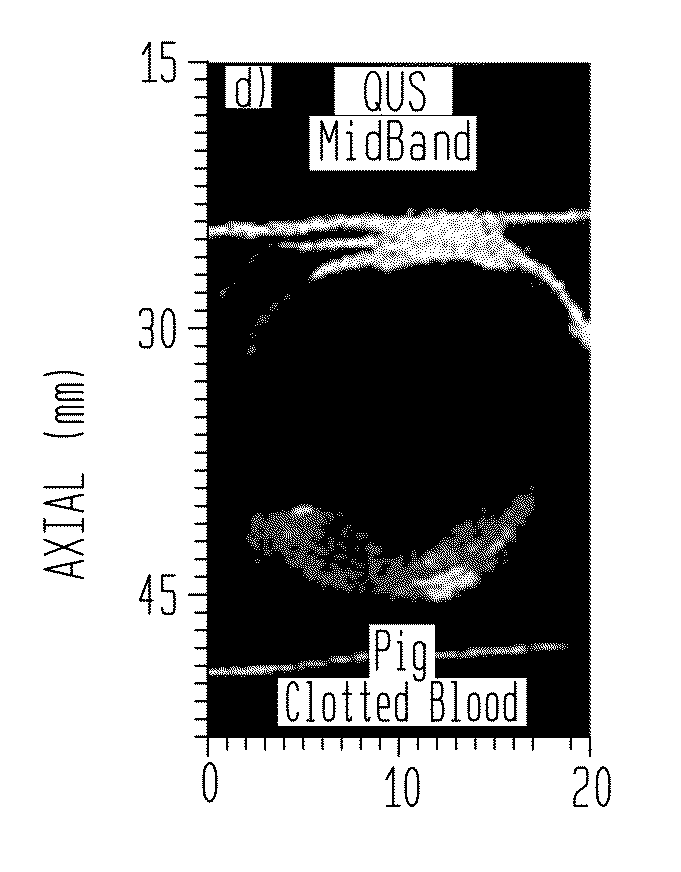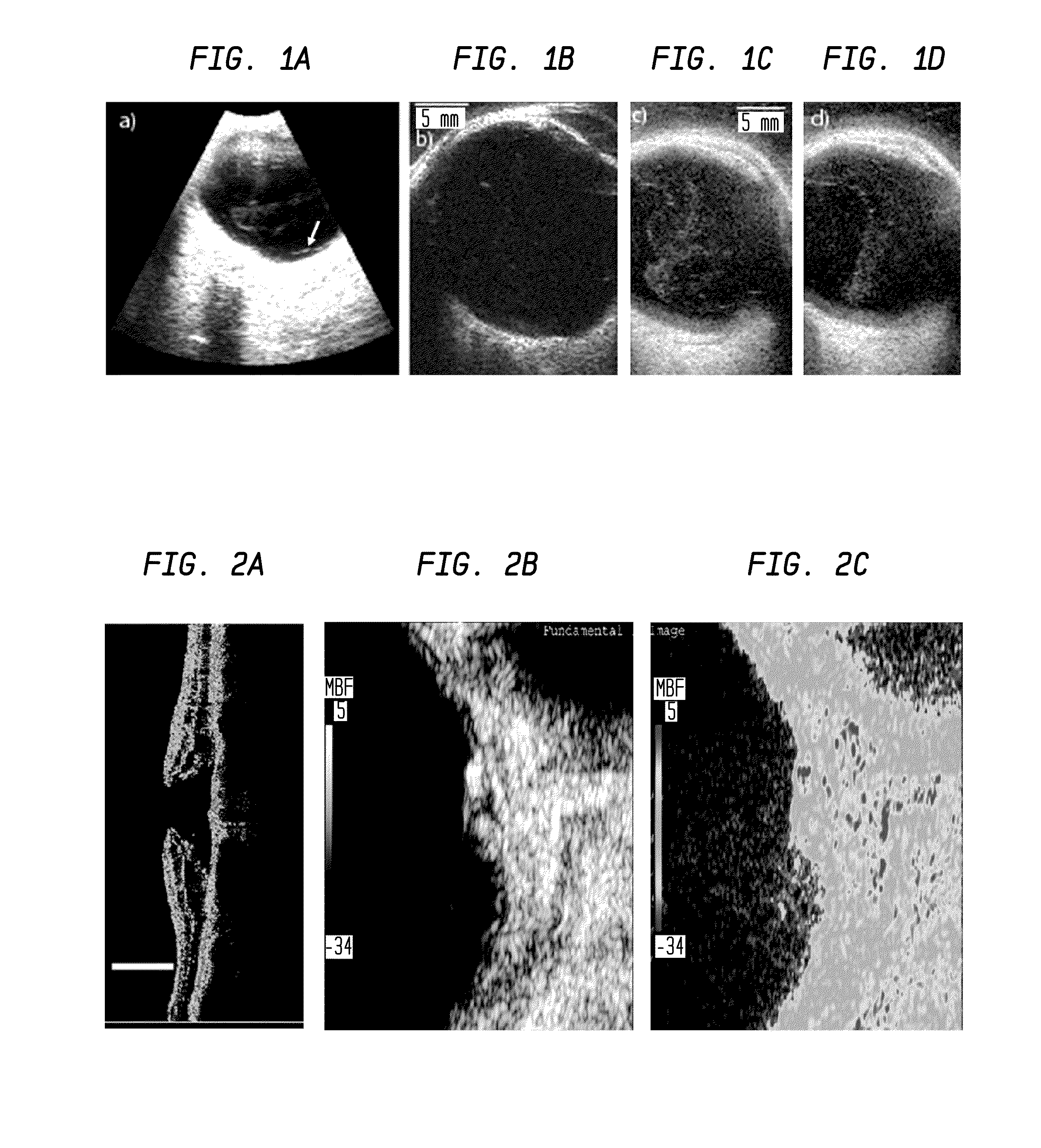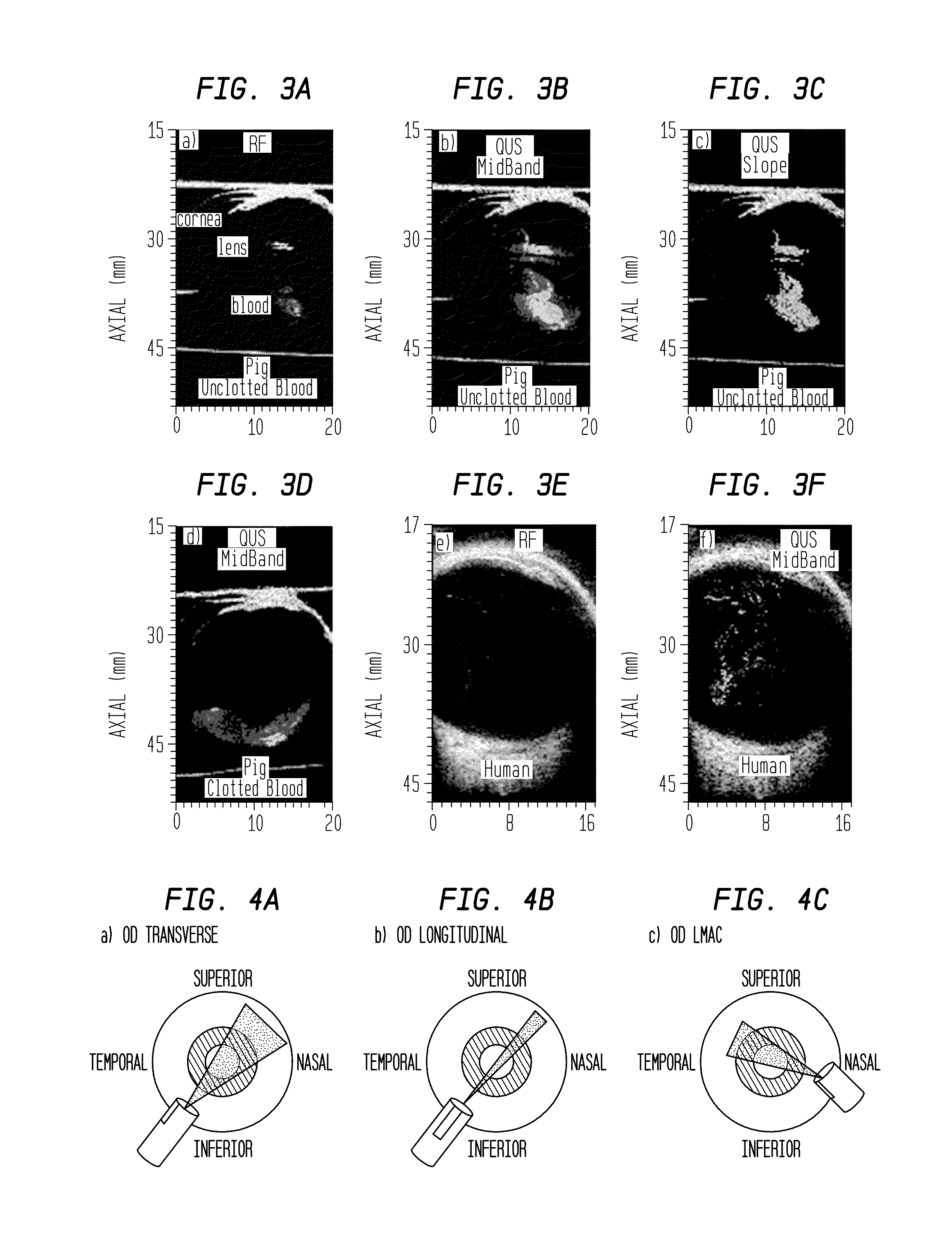Methods for diagnosing vitreo-retinal disease
- Summary
- Abstract
- Description
- Claims
- Application Information
AI Technical Summary
Benefits of technology
Problems solved by technology
Method used
Image
Examples
example 1
[0036]One example of a method to characterize inhomogeneities of the vitreous is provided. First, phase-resolved echo data are acquired from planes within the vitreous using a 20 MHz, high-frequency-ultrasound annular array. Planar sections are acquired in a series of parallel planes such that a 3D volume is sampled. Next, the data are normalized and processed to obtain local-ROI QUS estimates. The large collection of local-ROI estimates are reduced to a set of global parameters that have clinical relevance related to the state of the vitreous. The global parameters along with relevant non-ultrasound clinical global parameters obtained from numerous patients are entered into a database. The database contains cases of normal vitreous at various ages and disease cases. Using the global parameters in the database, a classifier is trained to distinguish between healthy vitreous and vitreo-retinal disease. Once the classifier is trained, a look-up table can be created such that new globa...
example 2
[0039]In another embodiment of the invention, image-processing methods are employed to derive global index or end value of inhomogeneities (floaters) in patients who are candidates for vitrectomy. Patients could have developed floater etiologies related to posterior vitreous detachment, myopic vitreopathy or other common conditions of the eye.
[0040]An ophthalmic, clinical ultrasound unit with a single-element, 15-MHz transducer with a 20-mm focal length and 7-mm aperture is used to acquire 100 image frames of log-compressed envelope data before scan conversion and video display. These data are digitally sampled at 40-MHz with 8-bit accuracy before envelope detection. All the settings on the ultrasound machine are kept the same in order to allow for direct comparison between patients. An exam was then performed by placing the ultrasound probe directly on the globe at the limbus, to avoid attenuation by the eyelid and lens and to minimize trauma to the cornea.
[0041]As illustrated in F...
PUM
 Login to View More
Login to View More Abstract
Description
Claims
Application Information
 Login to View More
Login to View More - R&D
- Intellectual Property
- Life Sciences
- Materials
- Tech Scout
- Unparalleled Data Quality
- Higher Quality Content
- 60% Fewer Hallucinations
Browse by: Latest US Patents, China's latest patents, Technical Efficacy Thesaurus, Application Domain, Technology Topic, Popular Technical Reports.
© 2025 PatSnap. All rights reserved.Legal|Privacy policy|Modern Slavery Act Transparency Statement|Sitemap|About US| Contact US: help@patsnap.com



